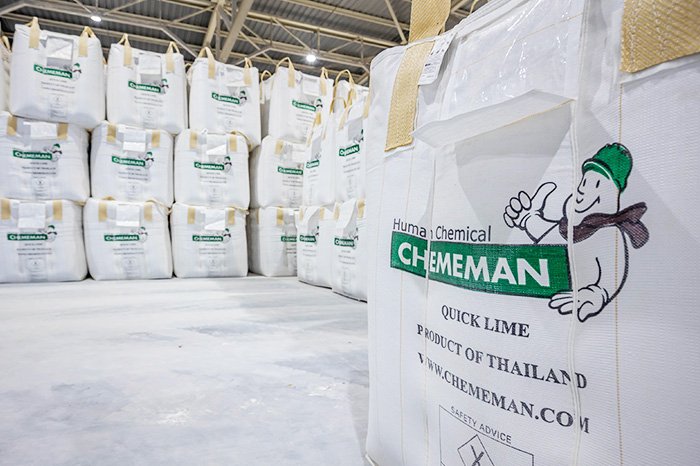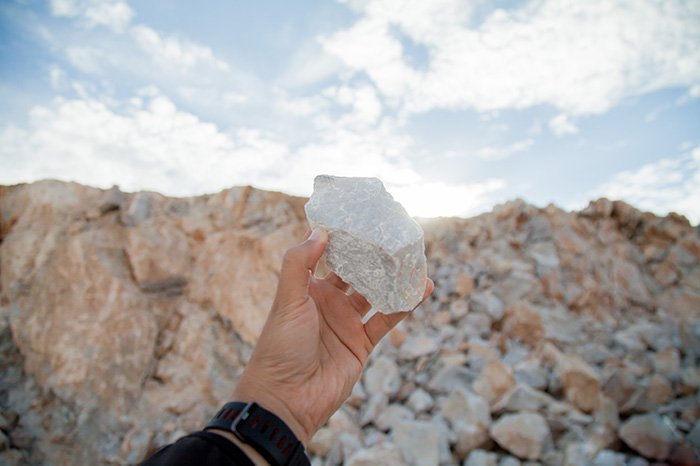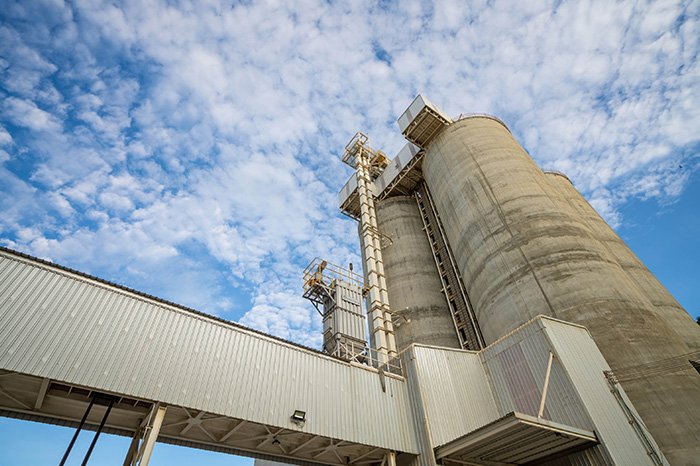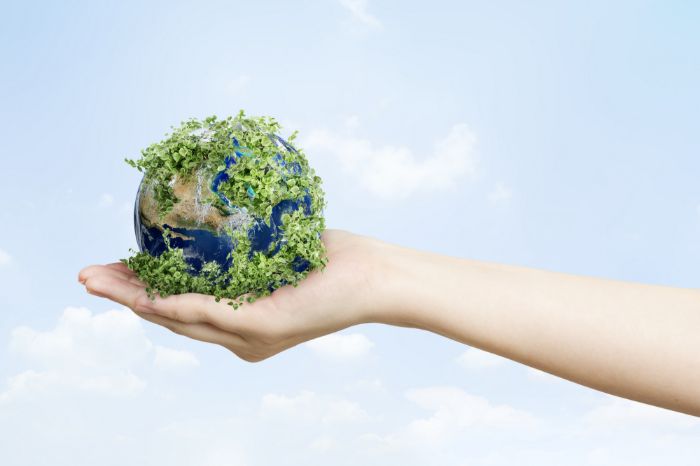FAQ
- Limestone Limestone is mined at the Group’s quarries, which contain more than 95% calcium carbonate. Limestone can be used as a raw material in many industries. Its physical appearance is a white solid that can be crushed into various sizes according to customer requirements.
- Quicklime Quicklime is produced by heating chemical limestone in kilns at temperatures above 800°C. It has a high calcium oxide (CaO) content with low impurities, making it highly alkaline and cost-efficient. Quicklime is a white solid and comes in various sizes to meet customer needs.
- Hydrated Lime Hydrated lime is made by adding water to quicklime through a hydrator. It is a fine white powder with a texture similar to flour, and is used in many industrial applications
Lime is an essential chemical product derived from calcining chemical-grade limestone using natural fuels. It can be used in various applications, such as pH adjustment, purification, and as a raw material in producing construction products and cement.
On the other hand, cement is produced from the mixture of limestone and clay, followed by fine grinding. It is primarily used as a binding material in construction, particularly in concrete that requires high strength and fast setting.
Limestone is used in the Animal Feed and Agriculture and Glass and Bottle industries. Meanwhile, Lime is used in the Pulp and Paper, Sugar, Bioplastics, Animal Feed and Agriculture, and the Fiberglass industries. In addition, industries such as Iron and Steel, Pulp and Paper, Chemical and Petrochemical, Construction and Construction Materials, and Flue Gas, Waste and Water Treatment use both limestone and lime in their production processes.
Chememan produces quicklime by calcining limestone using low-sulfur natural gas and coal. The type of fuel affects the quality of quicklime by low-sulfur natural gas containing lower levels of impurities. Additionally, different types of fuels can be customized in lime production processes to align with customer requirements.
Thailand: Tubkwang Quarry has approximately 80 million tons of mineable reserves, which is sufficient to produce lime for at least 40 years at current production levels.
Vietnam: Hoanh Bo Quarry has approximately 70 million tons of mineable reserves, which is sufficient to produce lime for at least 50 years at current production levels.
The primary cost in lime production is raw materials and energy costs. Chememan actively manages energy costs by maximizing production capability and secure diversified energy procurement contracts to control energy costs.
Chememan manages logistics with a focus on cost efficiency, timely delivery, and customer requirements.
Domestic and Neighboring Country Transportation:
The Group utilizes both its own fleet and third-party logistics providers for the transportation of products. The Group has integrated more electric trucks (EV) into its business operations to support sustainable logistics.
International Shipment:
The Group employs both containerized and bulk shipping methods.
Chememan adopts a market-specific distribution strategy tailored to each geographic region. In markets where the company does not have a local subsidiary or joint venture, products are sold directly to customers. Conversely, in markets where subsidiaries or joint ventures are established, Chememan supplies products to those companies, which are responsible for downstream distribution to end customers.
The Group’s business has foreign currency exposure in US Dollars, Australian Dollars, and Vietnamese Dong. As a result, the Group is exposed to foreign exchange risk. To mitigate this, the Group manages financial risk by sufficiently deposits Thai Baht and US Dollar to pay for Thai Baht and US Dollar expenses. Moreover, The Group enters forward contracts from time to time to hedge some of its remaining foreign currency exposure. However, the Group has no policy to speculate on foreign currencies
Chememan has intercompany loans with its Vietnamese subsidiary, where exchange rate volatility could potentially impact the financial statements. To address this risk, Chememan is in the process of supporting the Vietnamese subsidy in securing a Vietnamese Dong-denominated loan from a local financial institution.
Chememan pays attention to both business operation and sustainability by strictly implemented dust emissions within factory areas, installing dust removal systems in production processes, as well as using vacuum trucks to regularly clean roads inside the plant and in the surrounding community. Additionally, Chememan has invested in Solar projects and increased use of electronic trucks (EV) in production process and transportation. Chememan also regularly monitors the quality of air, noise, water, and industrial waste and implements preventive measures, also currently study technologies for reducing greenhouse gas emissions such as low-carbon products.






